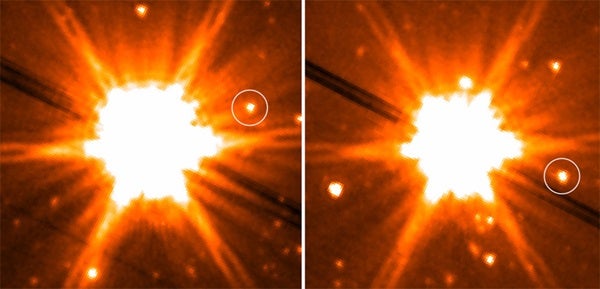Scientists using NASA’s Spitzer Space Telescope have imaged a brown dwarf star about 50 times Jupiter’s mass, orbiting a Sun-like star with a planet. Never before have astronomers witnessed a union like this.
Brown dwarf HD 3651 B, located in the constellation Pisces, is classified as a T dwarf — the coldest brown dwarfs. The star in the system is less massive than our Sun, and the planet is slightly larger than Saturn. The team, whose paper will appear in The Astrophysical Journal, discovered HD 3651 B by measuring the planet’s highly elliptical orbit in this system. They suspected an undiscovered object’s gravity influences the planet’s orbit. Spitzer confirmed these suspicions by revealing the brown dwarf.
“The orbit of the planet in this system is similar to Mercury’s, but the T dwarf has an orbit over 10 times larger than Pluto’s,” says Brian Patten of the Harvard-Smithsonian Center for Astrophysics and co-author of the team’s paper. “Although HD 3651 B would be just beyond naked-eye visibility to an intrepid astronomer living on this system’s planet, the T dwarf makes its presence known through gravity.”
Confirmed in 1995, brown dwarfs are dim, small stars that are not massive enough to burn hydrogen or hot enough to generate nuclear fusion. As these bodies age, they cool to nearly the temperature of a planet.
“Over the last 10 years, astronomers have been extremely successful in finding planets close to their host stars using indirect detection methods,” says Penn State’s Kevin Luhman, lead author of the team’s paper. “Because of its infrared capabilities, Spitzer is well suited for directly detecting cool T dwarfs, and perhaps even large planets, in the outer parts of planetary systems.”
Luhman’s team also found a smaller brown dwarf, about 20 times the mass of Jupiter, orbiting another star. Labeled HN Peg B, this smaller object could be the youngest T dwarf known, which may reveal clues to early brown dwarf development.










